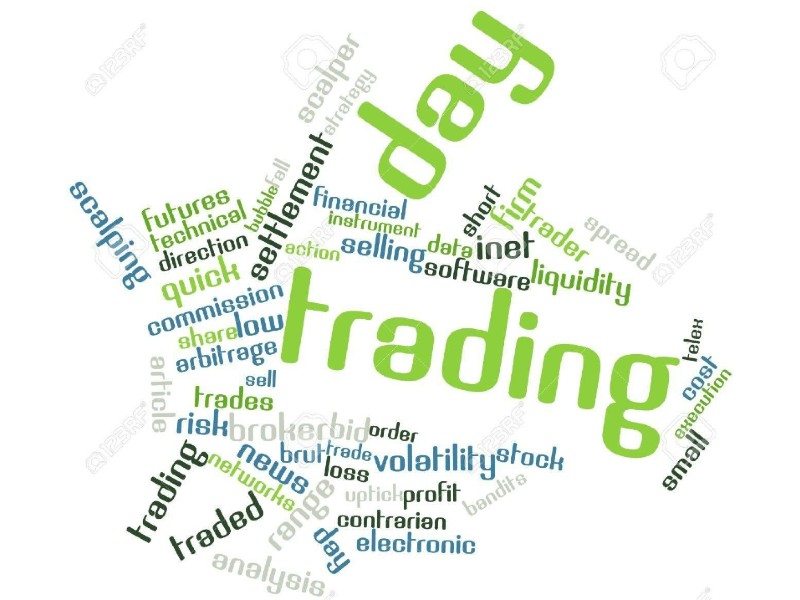What is Day Trading?
Day Trading, simply, is executing trades in a single day with all trades being closed by the end of the day before the exchanges close for the day. This type of trading can be very appealing for many traders because they can trade with lower account balances. Day Trades are often held for only minutes or hours before being exited for, one hopes, a profit.
Day trading can be a very profitable business if one treats it like a business and not like a hobby. Day Traders should understand that many hours of serious work are involved each day and be prepared to do the extra work that professional traders all do each day.
The Best Ways to Learn Day Trading in 2022-23
There is a lot of information about day trading on the internet. So much in fact, it is impossible to know where to start and what to focus on. If your intentions are to become a day trading hobbyist, then the wealth of data and information on the internet might be right down your alley. There are literally thousands of day trading training videos, articles, indicators, gurus, programs, and trading systems out there to keep you busy learning for the rest of your life. The best way to proceed is to just type “Day Trading” into a Google search, and you are on your way.
Tip 1: If you want to learn to day trade as a profession, you must keep your focus very narrow and specific. Find a simple trading style and system and attempt to become the best in the world at it. Those that become the best at anything do so by practicing and gaining as much experience as possible. Notice I said “experience” and not information or knowledge. Day Trading is just like anything else in life. The harder and longer you work at it, the better you will get. The easier or simpler the trading style and system are, the more likely you will have successful practice sessions each day and become a successful professional day trader.
Tip 2: Avoid the Pattern Day Trading Rule. A pattern day trader (PDT) rule is a regulatory designation for traders or investors who use a margin account to execute four or more day transactions in a range of five working days. The number of day trades must constitute more than 6% of the margin account’s total trade activity during that five-day window. The PDT designation imposes some limitations on future trading; this designation is put in place to discourage investors from trading excessively.
The Pattern Day Trading rule does not apply to the Futures markets. Here are just a few reasons why a beginning trader should choose futures day trading over day trading stocks:
- Futures Are Highly Leveraged Investments
- Future Markets Are More Efficient and Fair
- Commissions and Execution Costs Are Low
- Future Markets Are Very Liquid
- Speculators Can Make Fast(er) Money
- Futures Contracts Are Basically Only Paper Investments
- Futures Are Great for Diversification or Hedging
- Future Markets Are More Efficient and Fairer
- Short Selling Is Easier
Tip 3: Keep it simple. There are literally millions of ways to complicate day trading. Like with most things, the simpler you keep it, the more likely you will be able to master it.
Tip 4: Day Trade only very liquid and volatile instruments. Day Trading is an auction. When you place a trade, there must be someone that is willing to take that trade. The more willing customers you have, the more likely you will easily be able to buy and sell when necessary.
Tip 5: Do not try to be a master of all things. There is just too much to know. Learn a simple system:
- Why it works
- How it works
- When it works best
- When it does not work
The Best Day Trading Strategies
1. Momentum Trading
After the price has been in a tight range, it will eventually have a breakout from this range. On the breakout, momentum traders are hoping that the breakout is the beginning of a new trend so they will execute a trade to begin the ride to the end of the trend.
2. Range Trading
Ranger Day Traders will rely on different types of support or resistance levels to contain the range of the price movement. At each extreme, price is expected to bounce off these lines. Range traders will execute trades at these support and resistance levels and then exit when the trade hits the next level.
3. Scalping
The philosophy behind a scalping approach is that small wins throughout the day add a lot of money. The scalper establishes buy and sell targets and sticks to these predetermined levels. The scalping tactic is fast. It’s not uncommon for many trades to be made within a few seconds.
4. Pullback
Pullback traders are looking for strength in a downtrend or weakness in an uptrend. All trends have pullbacks in them where traders realize profits and begin scaling out of their positions. Pullback traders use sophisticated technical indicators to identify these strengths and weaknesses and anticipate the pullback. Pullback trading can be a very simple but powerful system for new-day traders.
5. News Trading
News traders will anticipate what a scheduled news event is (ISM Manufacturing PMI, Non-Farm Employment Change, Unemployment Rate, FOMC Member Speech, etc.)
Conclusion
With the new market dynamics created by today’s computerized trading, market characteristics can change very quickly and with little notice to the beginning day trader. Strategies that allow the day trader to execute trades quickly so that they can decrease their exposure to the quickly changing market characteristics are the best and safest options for new day traders. If a new day trader is looking for a profitable trading system that uses margins while limiting their exposure, a strategy day trading Pullbacks from futures instruments would be a great place to start.

